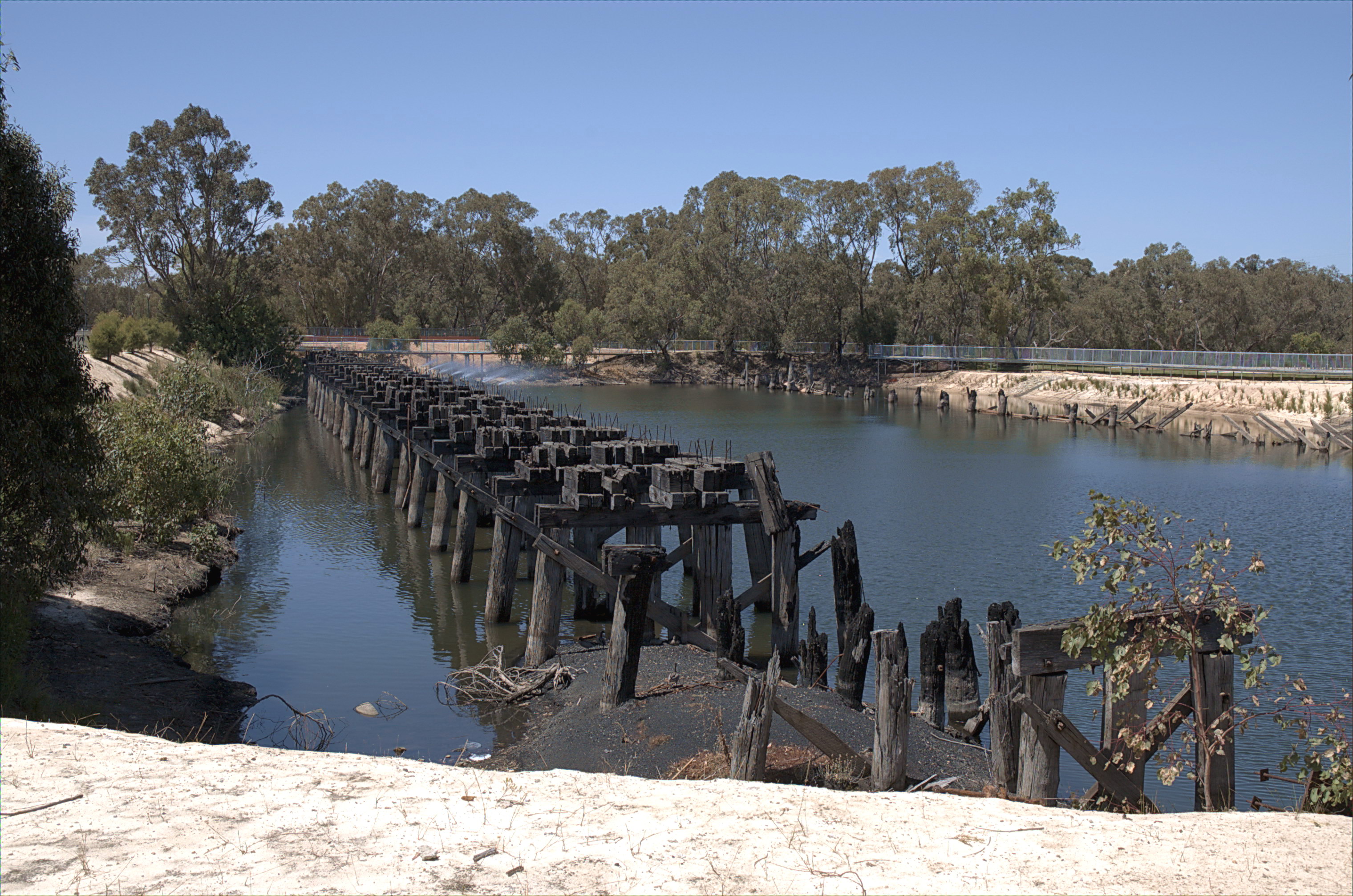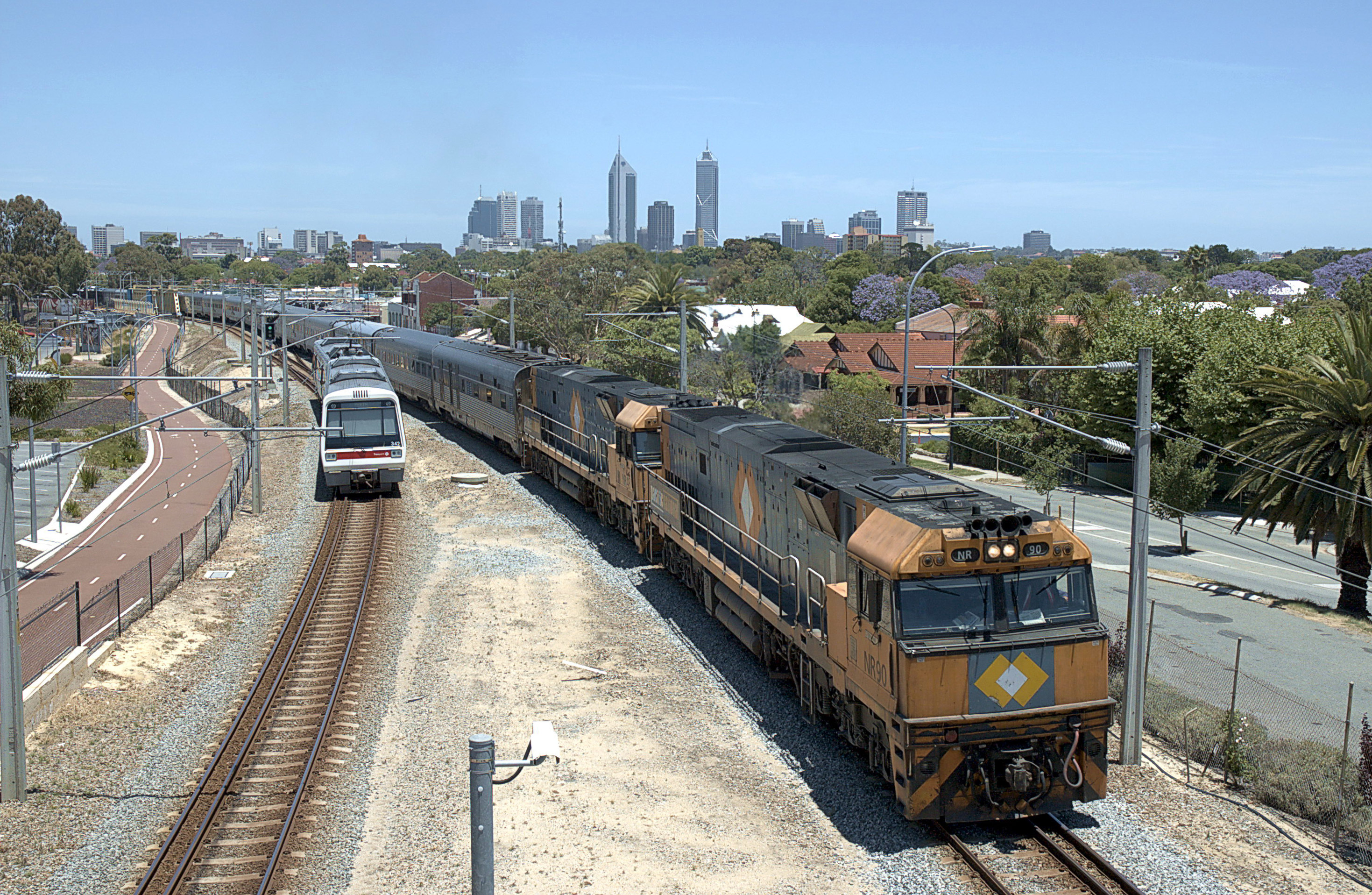|
Msa Garratt
The WAGR Msa class was a class of Garratt-type articulated steam locomotives. The class was built at the Midland Railway Workshops and operated by the Western Australian Government Railways (WAGR) between 1930 and 1963. It was the first Garatt type to be designed and constructed entirely in Australia. History The class was preceded on the WAGR system by the M/Ms class Garratts. The class were used extensively on WAGR lines with light rails and sharp curves, as a consequence many of the smaller older branch lines on the Darling Scarp; as well as those with steep inclines such as those on the Mundaring Weir, Nannup, and Flinders Bay lines. In their later years, the boiler pressure was reduced to match that of the M/Ms class. By this stage they had been concentrated on the Bunbury to Boyup Brook and Pinjarra to Boddington lines. Hearsay evidence suggests that the poor quality of the boilers in the Msa rendered some inoperable by the late 1940s. The last remaining Msa was a ... [...More Info...] [...Related Items...] OR: [Wikipedia] [Google] [Baidu] |
Midland Railway Workshops
The Midland Railway Workshops in Midland, Western Australia, were the main workshops for the Western Australian Government Railways (WAGR) for over 80 years. History The first railway workshops in Western Australia were located at Fremantle and shifted to Midland in 1904. The Midland Railway Workshops were involved with all WAGR rolling stock and engine construction and maintenance. Steam engines continued to operate on mainline service until 1971, and all major maintenance occurred at the workshops. Workforce Generations of workers at the workshops had considerable numbers of European migrants who arrived in Australia with limited English language, and there were significant groups of Italian migrants in the workforce. The workforce of the workshops had a rich history and, since closing, there have been projects to record oral history and collect information about the place and people involved. Closure In April 1993, the Richard Court Liberal State Government announced tha ... [...More Info...] [...Related Items...] OR: [Wikipedia] [Google] [Baidu] |
3 Ft 6 In Gauge Locomotives Of Australia
3 (three) is a number, numeral and digit. It is the natural number following 2 and preceding 4, and is the smallest odd prime number and the only prime preceding a square number. It has religious or cultural significance in many societies. Evolution of the Arabic digit The use of three lines to denote the number 3 occurred in many writing systems, including some (like Roman and Chinese numerals) that are still in use. That was also the original representation of 3 in the Brahmic (Indian) numerical notation, its earliest forms aligned vertically. However, during the Gupta Empire the sign was modified by the addition of a curve on each line. The Nāgarī script rotated the lines clockwise, so they appeared horizontally, and ended each line with a short downward stroke on the right. In cursive script, the three strokes were eventually connected to form a glyph resembling a with an additional stroke at the bottom: ३. The Indian digits spread to the Caliphate in the 9th ... [...More Info...] [...Related Items...] OR: [Wikipedia] [Google] [Baidu] |
Steam Locomotives Of Western Australia
Steam is a substance containing water in the gas phase, and sometimes also an aerosol of liquid water droplets, or air. This may occur due to evaporation or due to boiling, where heat is applied until water reaches the enthalpy of vaporization. Steam that is saturated or superheated is invisible; however, "steam" often refers to wet steam, the visible mist or aerosol of water droplets formed as water vapor condenses. Water increases in volume by 1,700 times at standard temperature and pressure; this change in volume can be converted into mechanical work by steam engines such as reciprocating piston type engines and steam turbines, which are a sub-group of steam engines. Piston type steam engines played a central role in the Industrial Revolution and modern steam turbines are used to generate more than 80% of the world's electricity. If liquid water comes in contact with a very hot surface or depressurizes quickly below its vapor pressure, it can create a steam explosion. Types ... [...More Info...] [...Related Items...] OR: [Wikipedia] [Google] [Baidu] |
Railway Locomotives Introduced In 1930
Rail transport (also known as train transport) is a means of transport that transfers passengers and goods on wheeled vehicles running on rails, which are incorporated in tracks. In contrast to road transport, where the vehicles run on a prepared flat surface, rail vehicles (rolling stock) are directionally guided by the tracks on which they run. Tracks usually consist of steel rails, installed on sleepers (ties) set in ballast, on which the rolling stock, usually fitted with metal wheels, moves. Other variations are also possible, such as "slab track", in which the rails are fastened to a concrete foundation resting on a prepared subsurface. Rolling stock in a rail transport system generally encounters lower frictional resistance than rubber-tyred road vehicles, so passenger and freight cars (carriages and wagons) can be coupled into longer trains. The operation is carried out by a railway company, providing transport between train stations or freight customer facilit ... [...More Info...] [...Related Items...] OR: [Wikipedia] [Google] [Baidu] |
Garratt Locomotives
A Garratt (often referred to as a Beyer Garratt) is a type of steam locomotive invented by British engineer Herbert William Garratt that is articulated into three parts. Its boiler, firebox, and cab are mounted on a centre frame or "bridge". The two other parts, one at each end, have a pivot to support the central frame; they consist of a steam engine unit – with driving wheels, trailing wheels, valve gear, and cylinders, and above it, fuel and/or water storage. Articulation permits locomotives to negotiate curves that might restrict large rigid-framed locomotives. The design also provides more driving wheels per unit of locomotive weight, permitting operation on lightly engineered track. Garratt locomotives produced as much as twice the power output of the largest conventional locomotives of railways that introduced them, reducing the need for multiple locomotives and crews. Advantages of the Garratt concept The principal benefit of the Garratt design is that the boil ... [...More Info...] [...Related Items...] OR: [Wikipedia] [Google] [Baidu] |
List Of Western Australian Locomotive Classes
This is a list of Western Australian locomotive classes, being classes of locomotive that have worked on railways in Western Australia. The majority of Western Australian steam locomotive classes were operated by the Western Australian Government Railways (WAGR). Regularly scheduled steam working ceased on WAGR mainline operations after 1971 - with only special excursion or enthusiasts trains being hauled by steam after that time. Other significant operators include the Commonwealth Railways, the Midland Railway Company of Western Australia and State Saw Mills. Many private organisations also operated steam locomotives in Western Australia. Locomotives Western Australian Government Railway Midland Railway Company of Western Australia (In order of introduction on the Midland railway.) Commonwealth Railways Other Diesel locomotives BHP (In order of introduction on the Goldsworthy and Mount Newman railways.) * CM39-8 * CM40-8M * CM40-8 * GE AC6000CW * EMD S ... [...More Info...] [...Related Items...] OR: [Wikipedia] [Google] [Baidu] |
Rail Transport In Western Australia
Railways in Western Australia were developed in the 19th century both by the Government of Western Australia and a number of private companies. Today passenger rail services are controlled by the Public Transport Authority (a department of the Government of Western Australia) through Transperth, which operates public transport in Perth, and Transwa, which operates country passenger services. Great Southern Rail operates the ''Indian Pacific''. The interstate standard gauge line east from Kalgoorlie is owned by the Australian Rail Track Corporation, with most other lines leased by the state to Arc Infrastructure. Freight rail was privatised in 2000. General intrastate freight is mainly operated by Aurizon, while grain traffic is also operated by Aurizon under contract to the CBH Group. Interstate traffic is operated by Pacific National and SCT Logistics. Aurizon also operate an interstate mineral sands service to Kwinana from Broken Hill for Tronox. A number of private iron or ... [...More Info...] [...Related Items...] OR: [Wikipedia] [Google] [Baidu] |
Pinjarra To Narrogin Railway
The Pinjarra to Narrogin railway was a 153 kilometre cross-country railway line built between the towns of Pinjarra and Narrogin in Western Australia. The line was opened in stages between 1910 and 1927 (with construction being delayed by the onset of the First World War) to service the booming timber industry as well as rural and fruit-growing establishments between the two termini. Pinjarra and Narrogin are located on the Western Australian Government Railways' South Western and Great Southern main lines respectively, and as such the Pinjarra to Narrogin railway provided an important link between the two, providing a rail transport link to towns and mills along the way, such as Dwellingup and Boddington, both of which continue to be significant settlements in the region. The closing of many of the local timber mills led to a gradual decline in traffic on the line and, accordingly, commercial services were withdrawn progressively until cessation of the last remaining serv ... [...More Info...] [...Related Items...] OR: [Wikipedia] [Google] [Baidu] |
Bunbury, Western Australia
Bunbury is a coastal city in the Australian state of Western Australia, approximately south of the state capital, Perth. It is the state's third most populous city after Perth and Mandurah, with a population of approximately 75,000. Located at the south of the Leschenault Estuary, Bunbury was established in 1836 on the orders of Governor James Stirling, and named in honour of its founder, Lieutenant (at the time) Henry Bunbury. A port was constructed on the existing natural harbour soon after, and eventually became the main port for the wider South West region. Further economic growth was fuelled by completion of the South Western Railway in 1893, which linked Bunbury with Perth. Greater Bunbury includes four local government areas (the City of Bunbury and the shires of Capel, Dardanup, and Harvey), and extends between Yarloop in the north, Boyanup to the south and Capel to the southwest. History Pre-European history The original inhabitants of Greater Bunbury are the ... [...More Info...] [...Related Items...] OR: [Wikipedia] [Google] [Baidu] |
Garratt
A Garratt (often referred to as a Beyer Garratt) is a type of steam locomotive invented by British engineer Herbert William Garratt that is articulated into three parts. Its boiler, firebox, and cab are mounted on a centre frame or "bridge". The two other parts, one at each end, have a pivot to support the central frame; they consist of a steam engine unit – with driving wheels, trailing wheels, valve gear, and cylinders, and above it, fuel and/or water storage. Articulation permits locomotives to negotiate curves that might restrict large rigid-framed locomotives. The design also provides more driving wheels per unit of locomotive weight, permitting operation on lightly engineered track. Garratt locomotives produced as much as twice the power output of the largest conventional locomotives of railways that introduced them, reducing the need for multiple locomotives and crews. Advantages of the Garratt concept The principal benefit of the Garratt design is that the boil ... [...More Info...] [...Related Items...] OR: [Wikipedia] [Google] [Baidu] |






